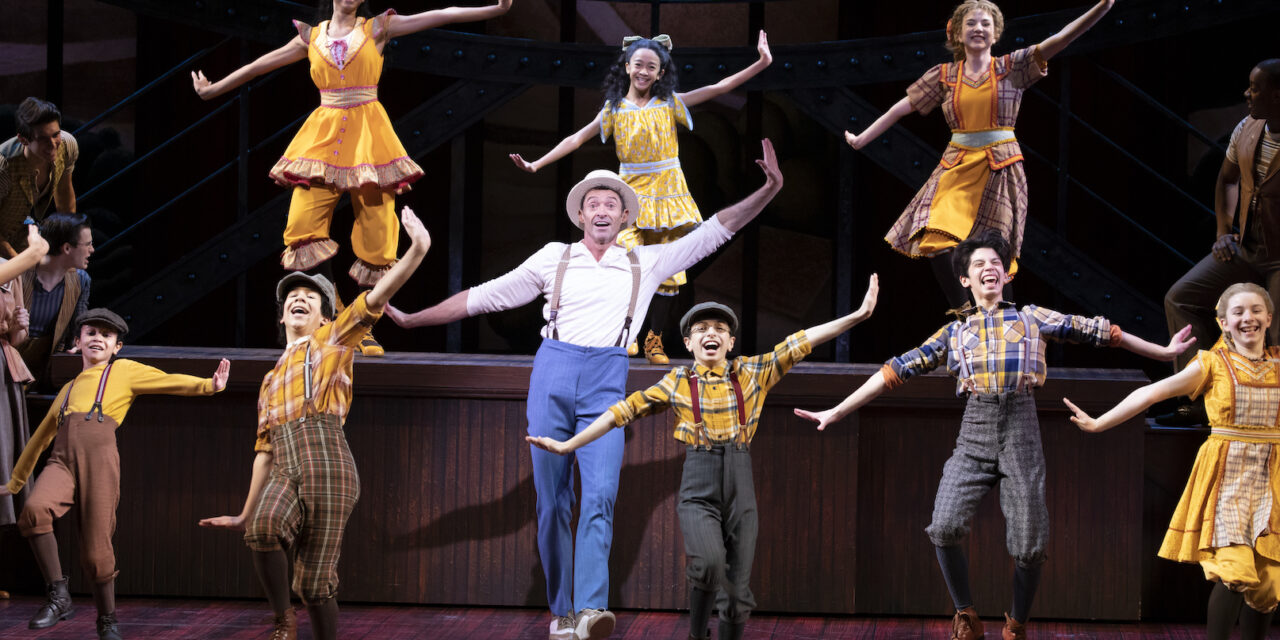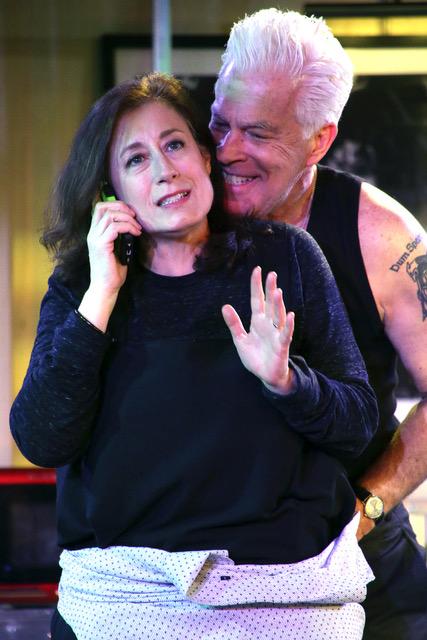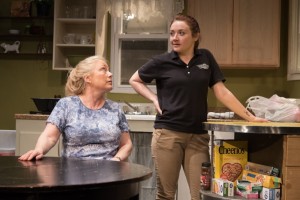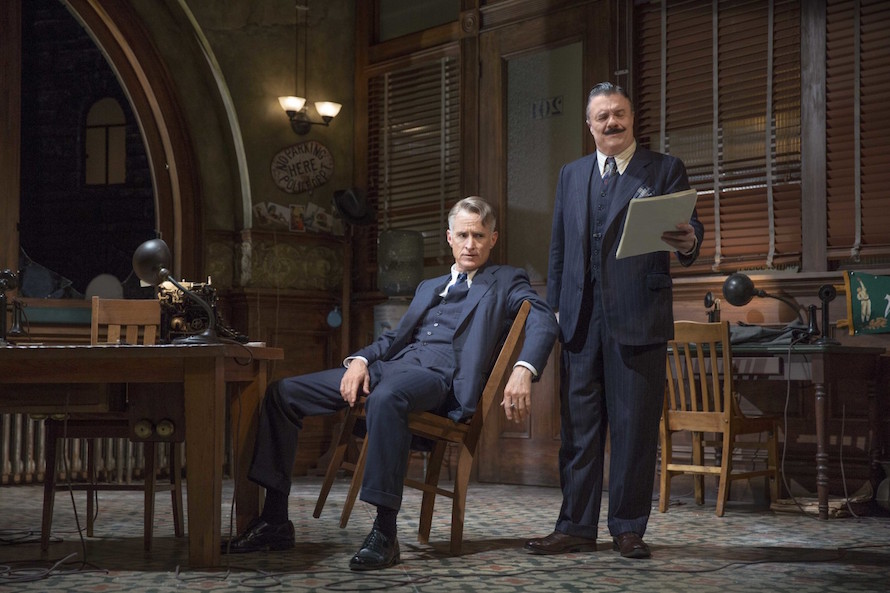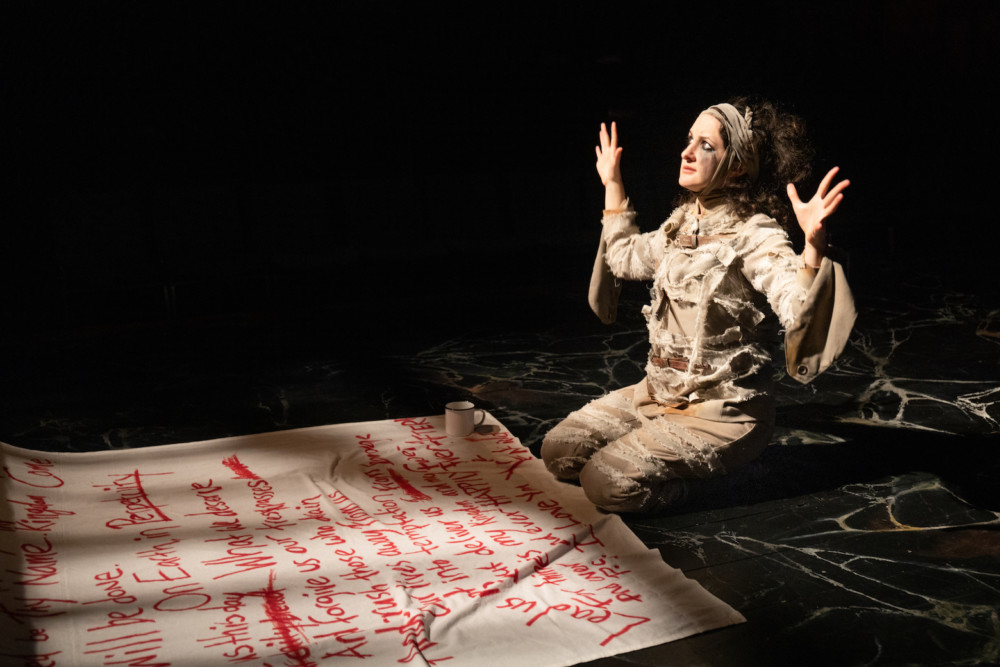By JK Clarke . . .
The small-town America of The Music Man is the one people refer to when talking about “the good old days,” when everyone knew everyone, life was cheery and people left their doors unlocked. Men were men and women knew their place (usually the kitchen). Everything was hunky-dory . . . except for those occasional moments when something bad happened, like for instance when con men or flimflam artists came to town to take advantage of local rubes and vulnerable ladies. And that’s pretty much the premise of Meredith Wilson’s classic and much loved musical, which is now revived in all its glory on Broadway at The Winter Garden Theatre with two wholesome and glamorous stars on its marquee. But is there anything about this homage to apple-pie Americana that anyone under 30 can relate to, let alone recognize? No. Emphatically no. And to suggest otherwise is utter Shapoopie.
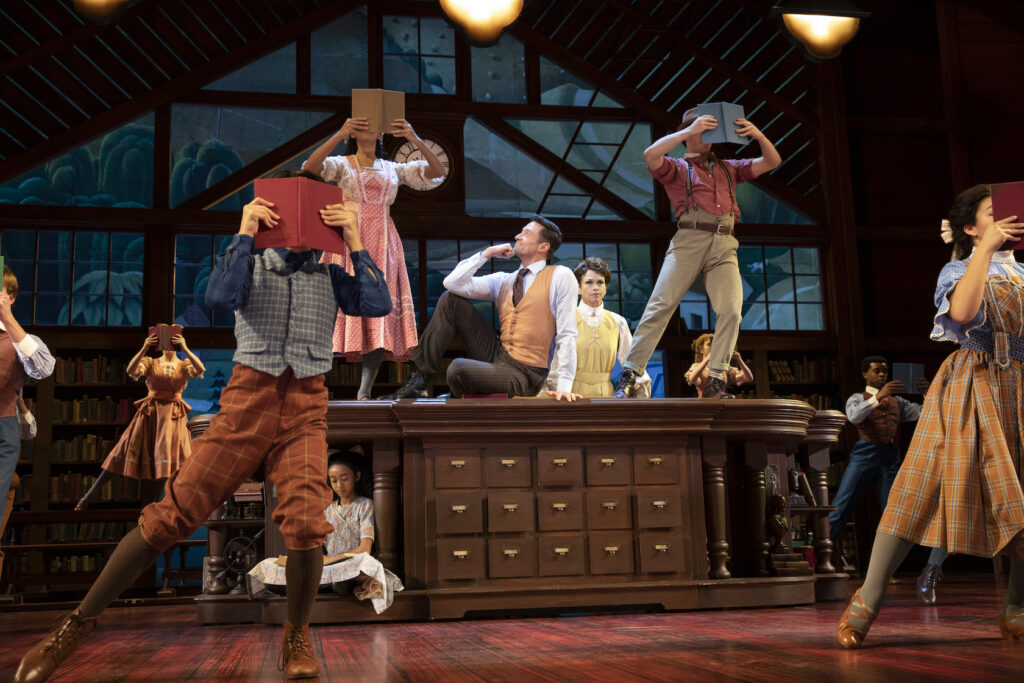

But does that mean this Jerry Zaks (Hello Dolly!) revival can’t be enjoyed by people of all ages? Of course, it can. Though not for the reasons one would think. Sure, Hugh Jackman and Sutton Foster in the iconic roles of Professor Harold Hill and Marian Paroo shine bright and hit all the right notes (most of the time). But they, like the story itself, are two-dimensional and paper-thin. Neither provides that special Leading Lady/Fella spark that ignites great musicals. Rather, they’re like Straight-A students who hand in perfect papers on time, every time; but they aren’t the enigmatic genius lurking in the corner. An early episode (season four, episode 12) of The Simpsons starred comedian Phil Hartman as a Professor Hill-type character in a brilliant parody of, in which he sells the town of Springfield an unnecessary and shoddy monorail system. Even as an animated character, Hartman exuded considerably more delightful, cynical charm than Jackman could ever hope for, demonstrating, perhaps, that an ironic send-up of this flawed and misrepresented era might be the only way to go.
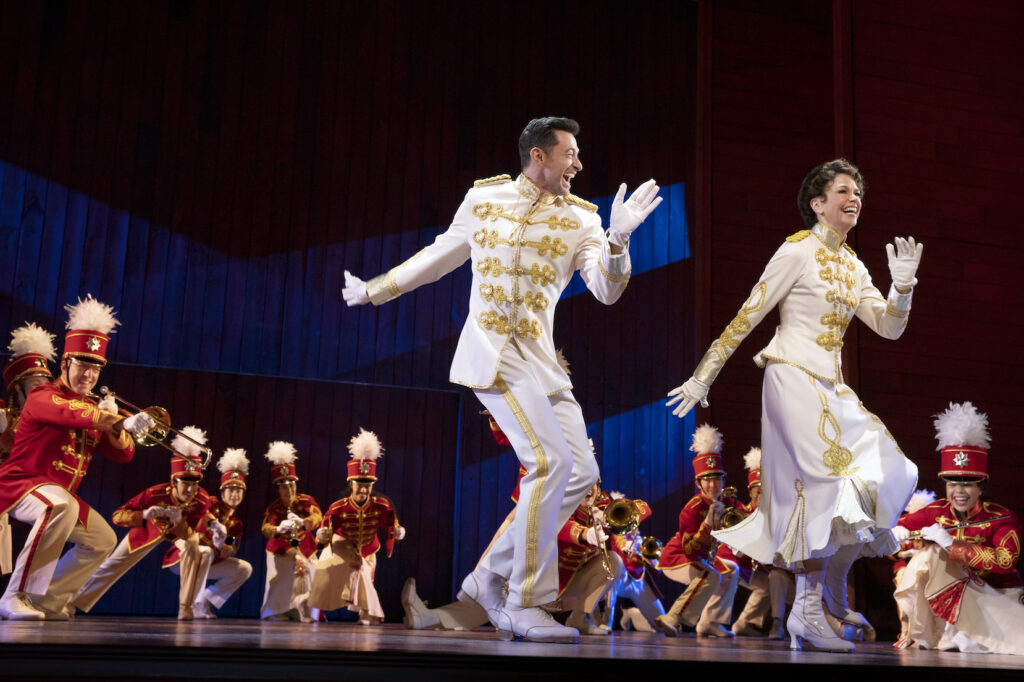

Instead, the stars (and I mean Stars!) of this Music Man are the Ensemble, particularly the young actors (from five to 25) who utterly steal the show with smiles and charm, but most especially with their extraordinary dancing. It doesn’t take a glance at the Playbill to know that the vast majority are trained ballet dancers, because they virtually explode across the stage. Every showstopper number (namely, “Marian the Librarian” and “Shapoopie”) are punctuated by these utterly fantastic young actors doing handstands and pirouettes that are only the domain of the trained dancer. If Jackman and Foster weren’t on stage, we’d hardly notice and the numbers wouldn’t have suffered a wit. Standout performances by Gino Cosculleula as bad boy Tommy, Benjamin Pajak as seven-year-old Winthrop Paroo, and young Kayla Teruel as Amaryllis carry the show on their own. And though it’s unorthodox to call out members of the ensemble by name, JT Church and little Emily Jewel Hoder were utterly remarkable parts of the team who drew the eye every time they were on stage.
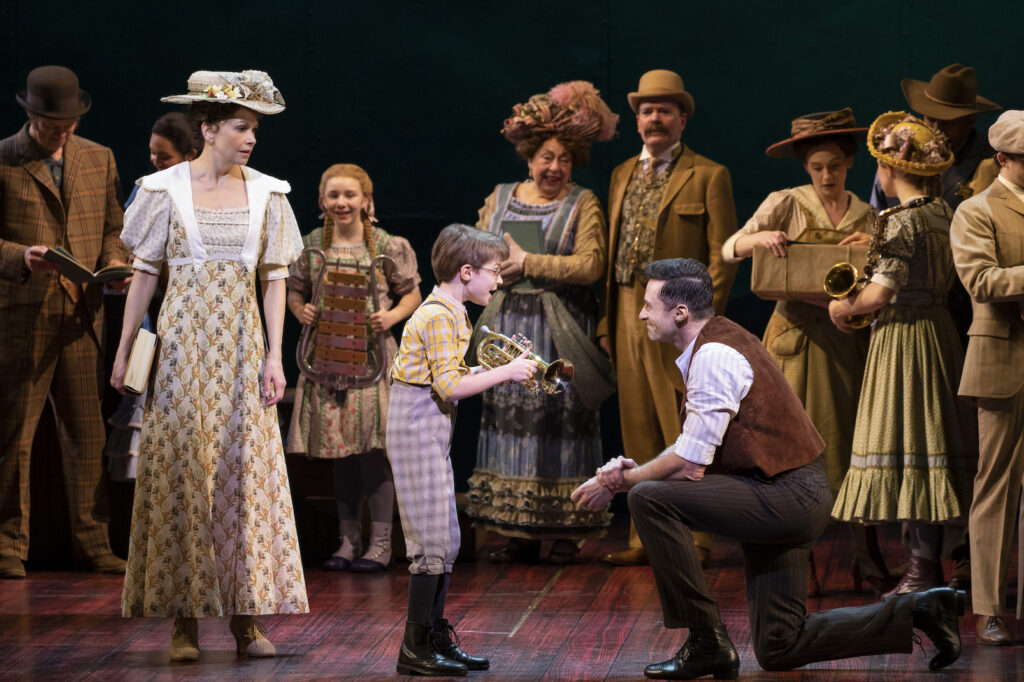

These days it’s hard to comprehend that this was an America that existed, for better or worse. If you are of a certain age, you probably recall your parents or grandparents describing this sort of small-town life, but it truly is lost to the ages, thanks to both television and the internet. Director Zaks softens the cultural homogeneity by casting black actors in roles (sheriffs, traveling salesmen, etc.) where there most certainly would not have been black men during those times, but the misogynistic gaze is still on the American woman, who was scandalous if not married, or if educated. Foster’s Marian is an outcast because she’s a “spinster” who runs the library, though she’s young enough to have a seven-year-old brother. Her place was in the home and in a position of deference to her husband (though the excellent and hilarious Jayne Houdyshell, as Eulalie Shinn, the mayor’s wife, shows a winning moment of defiance of the patriarchy, brief as it was). Even so, The Music Man is only held together by a string of memorable and beloved songs for which we patiently wait. And the lack of a real show stopper to close the show relegates the production to a series of fun performances (like the utterly delightful and hilarious “Pick-a-Little, Talk-a-Little” number featuring the townswomen in a minuet-esque, bobbing-head dance—yet another tip of the hat to Warren Carlyle’s stunning choreography) rather than the blockbuster musical it once was.
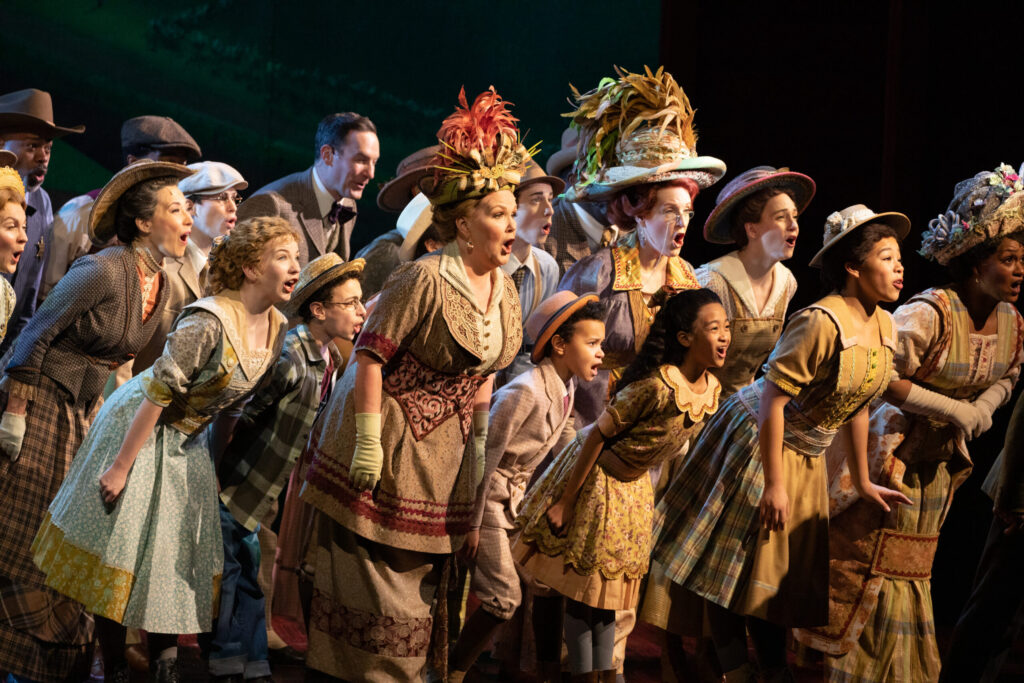

This iteration of The Music Man is not to be missed because it’s a throwback to the tradition of grand Broadway shows of which we are seeing less these days, for reasons both good and bad. The next time The Music Man is revived, it might not be as recognizable and familiar as this one.
The Music Man. Open Run at the Winter Garden Theatre (1634 Broadway, between West 50th and 51st Streets). www.musicmanonbroadway.com
Photos: Julieta Cervantes


